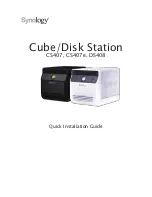
Upgrading Your Server 9-49
Notes
Observe the following notes on installing/removing a PCI card:
Do not touch the terminals of the riser cards and the leads of electronic components with
your bare hand. Fingerprints and dust left on them cause the server to malfunction due to a
connection failure or damage to the leads.
A riser card is designed for installing only low-profile PCI cards or full-height PCI cards.
Before installing a PCI card, make sure of the card specification.
PCI slot number "1C" is assigned to the riser card for low-profile PCI cards, "1B" is
assigned to the riser card for full-height PCI cards, and "0A" is assigned to the RAID
controller-dedicated slot.
The system detects the boot devices in order of the PCI bus slots 1B (full-height PCI card)
and then 1C (low-profile PCI card).
The PCI devices of the same type (including onboard PCI device) may be recognized in
different order from that described above, depending on OS or RAID System BIOS Utility.
Check the slot location of PCI device by PCI bus number, device number and function
number shown in the table below.
PCI device
Bus number
Device number Function number
Onboard NIC1
1
0
0
Onboard NIC2
1
0
1
Slot 1C
40
0
X
Slot 1B*
10
0
X
Slot 1B (N8116-23)
11
0
X
RAID-
dedicated slot
60h
0
X
* A different bus number might be assigned depending on which PCI board is inserted
into this slot.
Set "Disabled" for the optional ROM of a LAN device not to be booted by using the BIOS
SETUP utility.
If an additional LAN device is installed, it is hard to push the catch of the connector with
your finger that is connected to the LAN port. Disconnect the connector pushing the catch
with a standard screwdriver. At this time, be very careful for the screwdriver not to
damage the LAN port or other ports.
If a bootable PCI card (e.g., a RAID controller, SCSI controller, or LAN card) is
additionally installed, the boot priority is changed. After the additional installation, start
the BIOS SETUP utility, select [Boot] and set the new boot priority.
Contact your service representative for the acceptable optional PCI card.
If a device that can be booted (PCI card, USB device, etc.) is added, the boot priority
might change. If the priority has changed, use [Hard Drive BBS Priorities] on the [Boot]
menu of BIOS SETUP to specify a higher priority for the boot device.
[Boot]
Æ
[Hard Drive BBS Priorities]
Æ
Check the display.
If the boot device is an HDD under N8103-129/130:
(Bus 07 Dev 00) PCI RAID Adapter
Summary of Contents for Express5800/R120b-1
Page 20: ...Notes on Using Your Server 1 3 3 5 inch disk model...
Page 87: ...3 24 Setting Up Your Server This page is intentionally left blank...
Page 268: ...6 14 Installing and Using Utilities Windows Server 2003...
Page 296: ...7 14 Maintenance This page is intentionally left blank...
Page 350: ...8 54 Troubleshooting When you use a remote console 6 Each tool is selected and it starts...
Page 438: ...9 82 Upgrading Your Server This page is intentionally left blank...
Page 450: ...C 2 IRQ This page is intentionally left blank...
Page 474: ...D 24 Installing Windows Server 2008 R2 4 Activate Windows The Windows activation is complete...
Page 504: ...E 28 Installing Windows Server 2008 4 Activate Windows The Windows activation is complete...
Page 564: ......
Page 566: ...H 2 Using a Client Computer Which Has a CD Drive This page is intentionally left blank...
Page 576: ...I 10 Accessing Power and Performance Data This page is intentionally left blank...
Page 580: ...J 4 Product Configuration Record Table This page is intentionally left blank...
















































